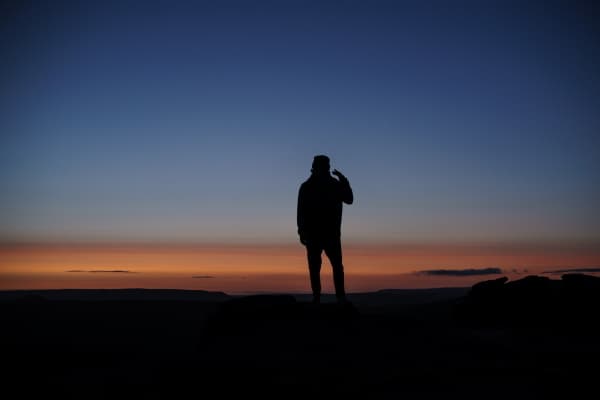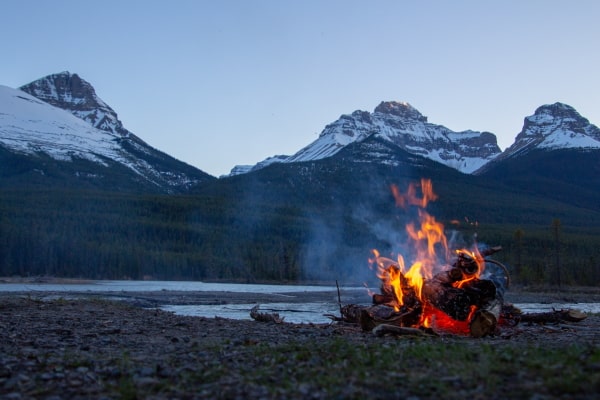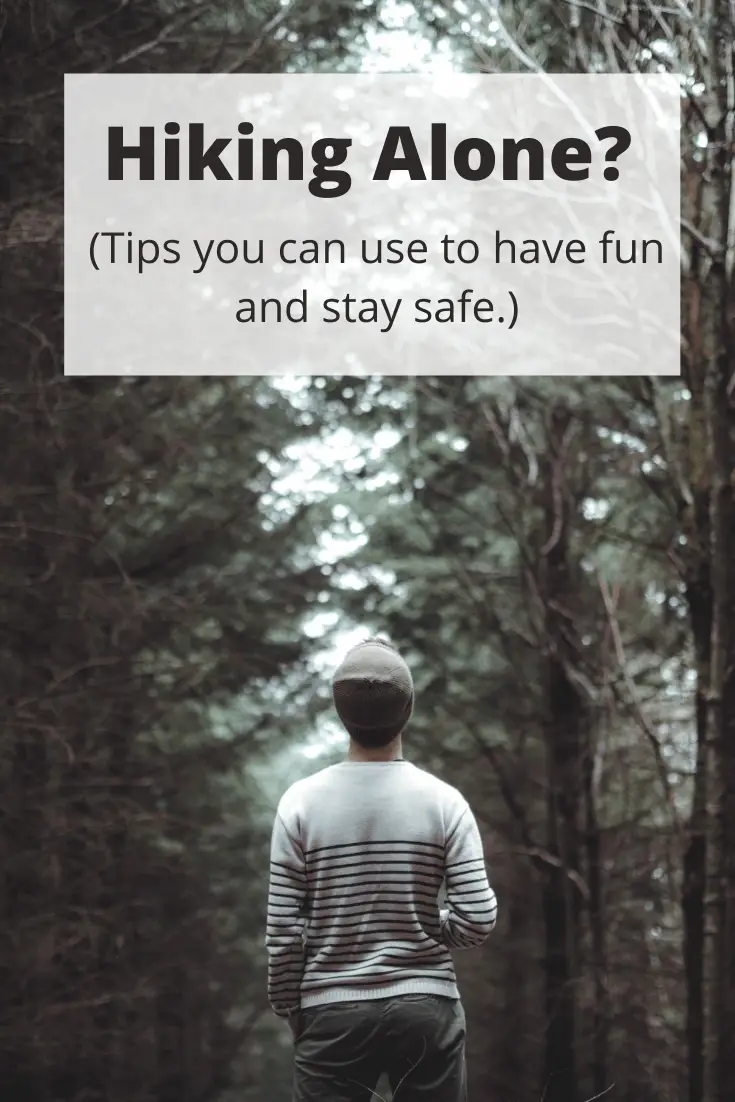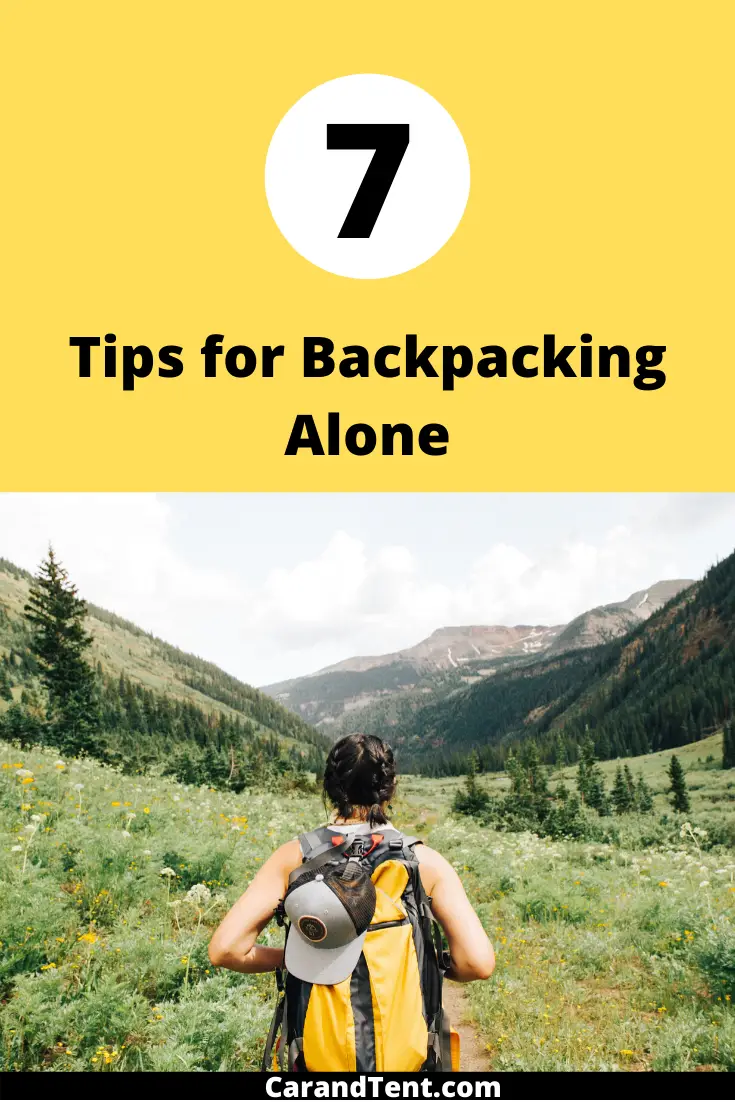
How do you start backpacking when you don’t know anybody else who backpacks? For me and many others, the answer was, and is, to go backpacking alone.
In fact, even many people who have a lot of backpacking friends end up backpacking alone. Sometimes, they do this because their schedules don’t always line up with their friends and sometimes they do this because going on a solo backpacking trip can be a lot of fun.
Want to go on your own solo backpacking trip? Here are some tips you can use to stay safe and have fun while backpacking alone.
Table of Contents
Bring Something to Do
One aspect of backpacking solo that many people often forget is the actual “solo” part. A solo trip often brings with it a lot of solitude and it’s a different kind of solitude than the kind you experience when hiking. When you go out hiking alone you have the actual hike and the changing surroundings to keep your mind occupied. This changes once you add camping into the mix.
This is especially true when you’re faced with rough weather conditions and you have to sit inside your tent for hours on end waiting for the weather to pass. Bring something to do and you won’t have to spend all of this time amusing yourself with your own thoughts.
Some things to bring might be:
- A book to read.
- A notebook to write in.
- Paper and pencil to draw with.
- A power bank so that you can read or play games from your phone without running low on power.
One word of caution is to keep the size and weight of whatever you bring with you in mind. A small notebook and a pencil to draw with won’t take up much room, but an easel and a set of watercolors will.
Take Additional Precautions Against Animals
When approaching animals, there really is safety in numbers. The mountain lion or bear that may have quickly run away from a large group of people might decide a solo backpacker isn’t quite threatening enough to run away from. Also, with only one set of eyes to rely on, you may be less likely to spot an animal as quickly as you would if you had several sets of eyes to rely on.
On top of all of this, solo backpackers are more likely to inadvertently sneak up on an animal. For example, a group of backpackers will usually make a lot more noise than a solo backpacker. The bear that would have normally gotten out of the area had he seen you coming might end up being startled by you and lashing out.
To guard against this, be sure to make some noise from time to time. Some solo backpackers will even sing while walking through known bear areas.
Additionally, you’ll want to know what to do should you encounter a bear or a snake out on the trail. Knowing what to do and what not to do in these situations could end up saving your life.
Here is a post on camping with bears and here is a post on how to avoid snakes when camping and hiking. Read through them to get a feel for how to deal with snakes and bears while out on the trail.
Increase Your Wilderness Skills Ahead of Time
Another thought to keep in mind is that you may only have yourself to count on while solo backpacking. Are you the type of person that can be counted on? If not, you may want to sharpen your skills until you become that type of person.
Here are some skills to work on:
- The ability to give first aid.
- The ability to navigate.
- The ability to find or build a shelter.
- The ability to build a fire.
- The ability to find and purify water.
When you’re backpacking alone and far from medical facilities, you will be responsible for giving yourself medical care. Can you dress wounds, apply tourniquets, and create makeshift splints? If not, what will you do if you suffer a bad fall? Learn these skills and you won’t have to ask this question.
You’ll also want to learn how to successfully find your way out, even if you lose the trail. Trails can change quickly, signs can be lost, and you could end up going off course. Your ability to find your way back to the trail could mean the difference between you living and dying.

Being able to build a shelter, create a fire, and find and purify water are all backup skills that you’ll want to know in case you do get hurt or lose the trail. Even if you’re injury triples the length of your trip, as long as you have water and protection from the elements, you’ll still be able to hike yourself back home.
Get Serious About Emergency Devices
Even with an elite set of wilderness skills, there are still some situations that you won’t be able to save yourself from. In these situations, you’ll have to hope that someone comes to your rescue.
One way of increasing the chances that someone can come to your rescue is to bring along a satellite device. Garmin’s InReach is very popular among serious backpackers because it can be used even in areas where cell phones cannot. On top of this, you can even get a monthly plan that will basically insure the costs that could be associated with a large rescue mission.
Low-tech emergency devices should be considered as well. A good whistle and even brightly colored clothing could come in handy during an emergency situation.
Plan Out Your Route and Then Share Your Plans
Unfortunately, even satellite phones can fail and, depending on your situation, you may not be able to use them anyway. In these instances, you’ll have to hope that somebody notices you’re missing. You’ll also have to hope they know approximately where you are when you do.
Create a situation where people know where you are and when you’ll be back by creating a detailed route plan. Once you’ve planned everything out, let the local rangers in on these plans. Also, let one of your loved ones know as well and let them know that if they don’t hear from you by a certain day, they should alert the authorities.
Of course, don’t go too crazy with this. If your plan is to hike through 100 miles of dense wilderness, you may end up taking longer than you thought and you don’t want rescue crews out looking for you because your hike ended up taking a day longer than you had hoped.
Pack for Redundancy
When you go backpacking with other people, you’ll usually have some built-in redundancy. For example, if your flashlight breaks, you may be able to borrow someone else’s flashlight when you need it. When you go backpacking by yourself, you won’t have this added benefit.
For this reason, you may want to pack multiples of some of the more critical items. I’d be sure to bring multiple ways to purify water as well as some extra clothing and extra lighting as these items are critical to any backpacking trip.
Start off on “Easy Mode”
Just because you have great wilderness skills, a satellite phone, and all of the extra gear you can carry, doesn’t mean you need to head out on an epic journey your first time out. Instead of making your first solo backpacking trip a pilgrimage through the Appalachian Trail, why not go on a weekend trip close to home.
Better yet, try to go backpacking somewhere you’ve already been to. This way, you’ll know what to expect and you’ll be better prepared to meet any challenges the area might pit you up against. Once you’ve gone on a few short and easy trips by yourself, you can always go out and tackle the larger ones.



